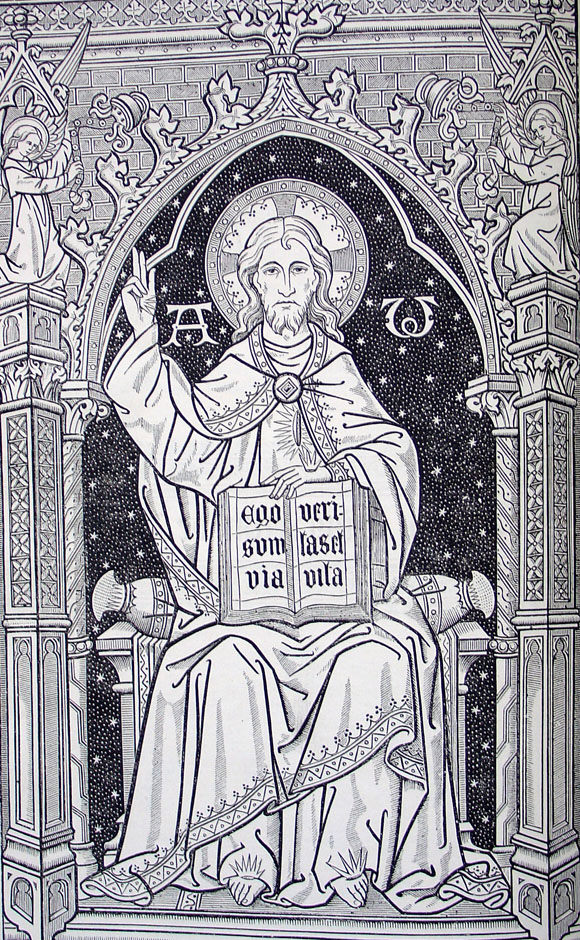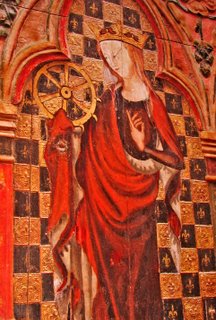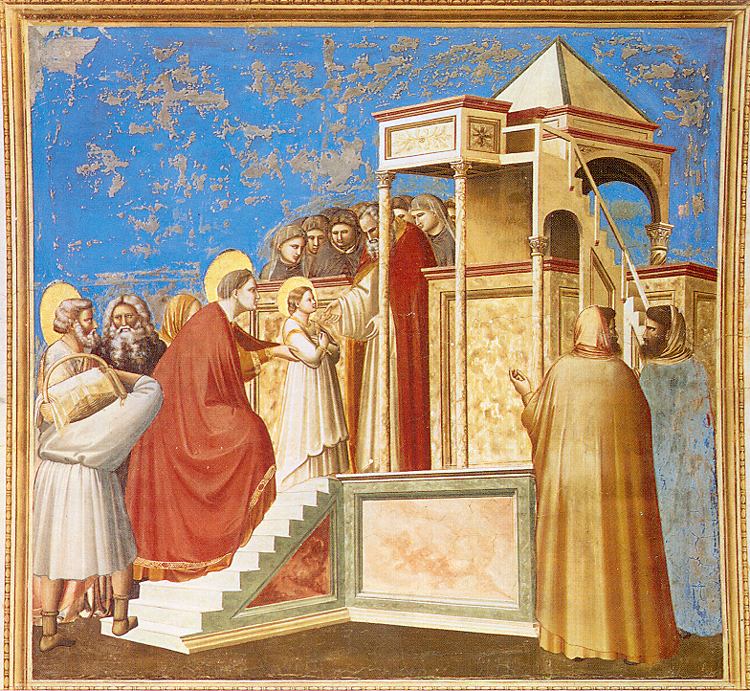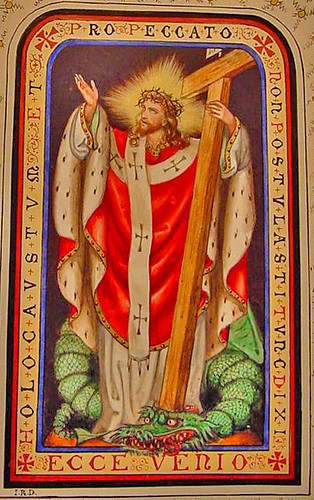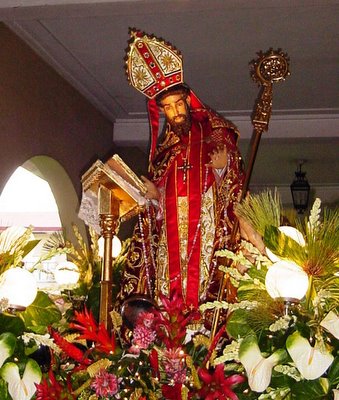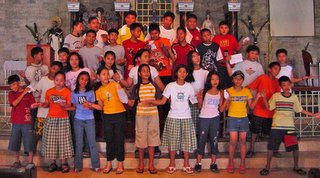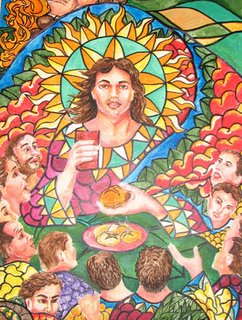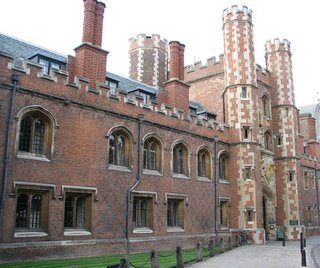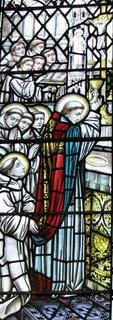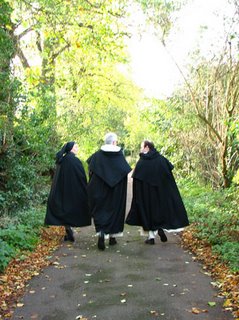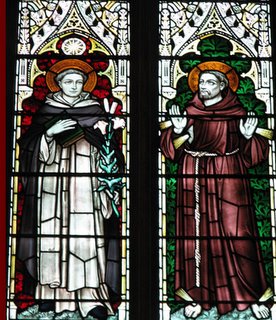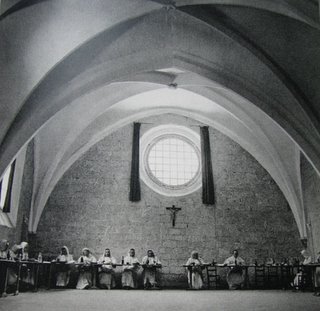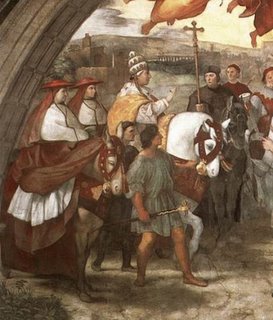
Of all the cathedrals in England, one of the most magnificent, which I have been fortunate to sing in, is
Lincoln Cathedral. It sits perched on a steep hill (indeed, the road leading up to the cathedral is so called) and from the top one has a vantage point of the surrounding low-lying lands for miles around; I believe only Durham rivals its dramatic location.
Today, the Church in England celebrates the feast of the bishop who built
this great house of God and whose Shrine was in the Angel Quire of the cathedral. Unsurprisingly, a vicious king Henry VIII had this destroyed and the saint's body has never been found. Nevertheless, the cathedral itself stands as a testament to
St Hugh of Avalon (c.1140 - 1200).
Hugh was born at Avalon in Burgundy, where his father was a soldier and landowner. When his mother died when he was just eight, Hugh was educated at the Augustinian Priory of Villard-Benoit. When he was fifteen, he made profession as an Augustinian canon and then was ordained deacon at the age of nineteen. He was a noted preacher and was placed in charge of St Maximin, a small dependency of his priory.
At some point he went on a visit with his prior to
La Grande-Chartreuse, the Carthusian motherhouse founded by
St Bruno in 1084. He was drawn to the silence and spirituality of the monastery and eventually left the Augustinians and received the Carthusian habit when he was twenty-five years old. Meanwhile, king Henry II of England had founded the first Carthusian house in England at Witham (Somerset), in reparation for the murder of
St Thomas Becket. In need of an able prior, he requested for Hugh, whom he had heard of by reputation. The bishop of Bath was sent to fetch him and the Chapter of La Grande-Chartreuse agreed.
At Witham, Hugh immediately set about building the monastery and settled injustices and smoothed over relations with the local people. Indeed, his humility and evident integrity won round the enemies of the Priory and even the king travelled long distances to seek his advice.
Like
St Edmund, whose feast we celebrated yesterday, St Hugh had to tackle the English monarchy's penchant for the revenues of church land which they laid claim to when a see was vacant. As such, the monarchy left several sees vacant, including
Lincoln, which was without a bishop for eighteen years. Eventually, the king capitulated and in 1186, the dean and chapter of Lincoln were told to elect a new bishop. Of course, Hugh was chosen (with Henry's influence) and it was only in obedience to the prior of La Grand-Chartreuse that Hugh agreed to take up the crozier. Thus, he became bishop of what was then the largest diocese in England, stretching from the Humber to the Thames.
The diocese was in need of reform and he set out to tirelessly lead by example, visiting the parishes and restoring discipline among the clergy. The cathedral had been damaged by an earthquake in 1185. This seems rather strange as I thought the British Isles were exempt from earthquakes but that is the evidence supplied! In any case, St Hugh set about reconstructing the church, sometimes even with his own hands. He designed most of the beautiful building although it was incomplete when he died. In particular,
the Angel Quire, which is known as the "most beautiful presbytery in England" was only built in 1253 to contain his Shrine. It is so named because of the carved angels between the triforium arches of the choir.
But much of Hugh's success must be due to his contemplative spirit; once a year, he retired to Witham Priory to restore his Carthusian roots. He was also noted for his humility and his winning personality. Although reputed to be the most learned monk in England, he was also full of fun and good conversation and was said to have been of a most cheerful, responsive and enthusiastic disposition, with a particular gentleness with children and babies. He was also noted for his fearless concern for justice and combated Christian anti-Semitism, had a special care for lepers and rebuked kings. Indeed, he was called the "
hammer of kings" and he was respected for this. Richard I once said of St Hugh that "
if all the prelates of the Church were like him, there is not a king in Christendom who would dare to raise his head in the presence of a bishop"!
In 1200, Hugh visited La Grand-Chartreuse, as well as the abbeys of
Cluny and
Citeaux in France. But he was already ill and on his return to England, he went to pray at the Shrine of St Thomas Becket in Canterbury. His condition did not improve so he retired to his house in London in the Old Temple, Holborn. That site is now
Lincoln's Inn, one of the four Inns of Court in the city. Finally, on 17 November 1200, after a lingering and painful illness he died as the choir sang the
Nunc Dimittis. His body was taken on a triumphal progress to Lincoln and prelates, princes and kings as well as his beloved poor and marginalized were present at his funeral.
In 1220 he was canonized by Pope Honorius III, the first Carthusian to be raised to the altars, although the request for his canonization came not from the Carthusians but the English king and bishops. In 1280, St Hugh's relics were transferred to a new Shrine in the splendid Angel Quire of the Cathedral he built. This was a popular shrine until the Reformation. All that remains of St Hugh is a white linen stole which is now at
Parkminster, the only Carthusian house in England. St Hugh's College, Oxford is named for him and at the site of Avalon, a round tower was built by the Carthusians in the 19th century in his honour.

Rather like his contemporary, St Francis of Assisi, St Hugh was noted for his affinity with animals! While he was a Carthusian monk, it was said that squirrels and many species of bird were attracted to the garden outside his cell. Moreover, his special emblem is a swan, which is even depicted in stained glass in Lincoln Cathedral. This was the saint's pet swan which is said to have taken up its abode at Stow, the episcopal manor-house, on the day of the Bishop's installation at Lincoln. It formed an especial attachment to St. Hugh, feeding from his hand, following him about and even guarding his bed as he slept. It displayed extreme grief on Hugh's last visit to Stow, before going to London in 1200.
May St Hugh of Lincoln pray for us and the English Church.
I am indebted to Butler's Lives of the Saints and Boulter's 'The Pilgrim Shrines of England' for much of the information above. The image of St Hugh above is from the Angelus Workshop.
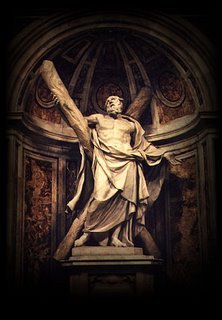 St Andrew, the brother of Simon Peter, who is also known as the 'protoclete' or "first-called", is honoured today in the Church's sanctoral calendar. Little is known of his apostolate after the Ascension although the tradition is that he went to Greece. Constantinople claims their apostolic lineage from him, but there is little evidence for this. The apocryphal passio of St Andrew says that he was crucified at Patras in Achaia but he was not nailed to the cross. Rather, he was bound to it and he is said to have preached from it for 2 days until he died. The idea that his cross was a saltire (as seen in the flag of Scotland and the image to the right) did not emerge until the 10th century and become common only in the 14th century. His supposed relics were taken by the emperor Constantius II to Constantinople in 356 or 357. However, the Crusaders removed them to Amalfi in 1204 and the head was brought to St Peter's in Rome in 1461 or 1462. It remained there until Pope Paul VI returned it to the Patriarch of Constantinople.
St Andrew, the brother of Simon Peter, who is also known as the 'protoclete' or "first-called", is honoured today in the Church's sanctoral calendar. Little is known of his apostolate after the Ascension although the tradition is that he went to Greece. Constantinople claims their apostolic lineage from him, but there is little evidence for this. The apocryphal passio of St Andrew says that he was crucified at Patras in Achaia but he was not nailed to the cross. Rather, he was bound to it and he is said to have preached from it for 2 days until he died. The idea that his cross was a saltire (as seen in the flag of Scotland and the image to the right) did not emerge until the 10th century and become common only in the 14th century. His supposed relics were taken by the emperor Constantius II to Constantinople in 356 or 357. However, the Crusaders removed them to Amalfi in 1204 and the head was brought to St Peter's in Rome in 1461 or 1462. It remained there until Pope Paul VI returned it to the Patriarch of Constantinople.









